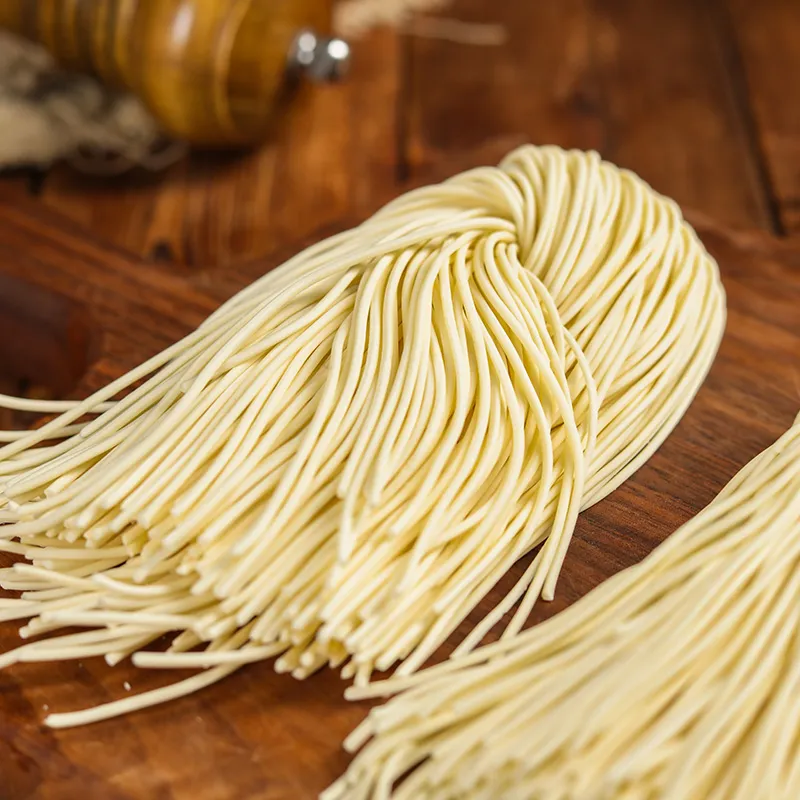Delicious Homemade Chinese Stretchy Noodles Recipe You Must Try
The Culinary Delight of Chinese Stretch Noodles
Chinese cuisine is a rich tapestry woven with diverse flavors, techniques, and traditions. Among its many offerings, one dish that stands out for its distinctive preparation and delightful texture is the Chinese stretch noodle, also known as lamian (). This iconic noodle embodies the heart of Chinese culinary artistry, and its history, preparation, and cultural significance offer a captivating glimpse into the world of Chinese gastronomy.
A Brief History of Lamian
The origins of lamian can be traced back over a thousand years, believed to have emerged during the Tang Dynasty (618-907 AD). It is said that lamian was born from the kitchen of Muslim chefs who sought to create a dish that reflected their cultural identity while integrating local ingredients. This fusion of cultures led to the birth of the chewy, hand-pulled noodles that we know and love today.
Traditionally, lamian is made from a simple mixture of flour, water, and salt. The art of making lamian lies in the stretching and folding of the dough, which is both a skill and a performance. Chefs use their hands to knead, twist, and stretch the dough into long, thin strands. This process not only creates the iconic texture but also bonds the chef with the ingredients, turning a simple preparation into a culinary dance.
The Technique
Making Chinese stretch noodles requires significant practice and technique. The dough, once kneaded to the right consistency, is allowed to rest to ensure it is pliable and easy to stretch. The chef then takes a piece of the rested dough and begins the stretching process.
First, the dough is rolled out into a long cylinder. The chef then elongates the dough by gently pulling it apart, doubling it over and repeating the process several times. With practiced motions, the noodles gradually get thinner and longer. The final product should be evenly sized and possess a glossy sheen, a testament to the skill of the chef.
chinese stretch noodles

One of the unique aspects of lamian is that it can be served in various forms. Whether in a rich, savory broth, stir-fried with vegetables, or simply tossed with a tangy sauce, the versatility of these noodles is endless. The texture of lamian—chewy yet tender—adds an unparalleled richness to each dish, making it a beloved staple across many regions of China.
Cultural Significance
Stretch noodles are more than just a delicious dish; they are deeply embedded in Chinese culture and traditions. In China, noodles symbolize longevity and are often consumed during birthdays and other significant life celebrations. The act of stretching the noodles is not merely a cooking technique; it is a metaphor for stretching one's life and welcoming good fortune.
Street vendors and specialized noodle shops can be found throughout China, each offering their unique variation of lamian. In cities like Lanzhou, the birthplace of the famous Lanzhou beef noodles, handmade noodles are a point of pride and a must-try for any culinary enthusiast visiting the area. Diners can enjoy watching the skilled chefs perform their craft, a visual feast that enhances the dining experience.
Conclusion
Chinese stretch noodles are a testament to the rich culinary heritage of China. With their origins steeped in history and culture, the art of lamian-making showcases both skill and tradition. From their intricate preparation to their cultural significance, stretch noodles offer a unique culinary experience that transcends mere sustenance.
As globalization continues to influence culinary practices, the allure of Chinese stretch noodles remains strong. Whether in an authentic Chinese restaurant, at a bustling night market, or prepared at home, lamian is a delightful exploration of flavors and textures. So the next time you enjoy a bowl of these delightful noodles, remember the long history, the skillful hands that created them, and the cultural stories they continue to tell. Each slurp is not just a taste of deliciousness; it's a connection to a rich legacy of Chinese cuisine.
-
Unleash Your Inner Chef with Delectable Italian Pasta CreationsNewsAug.01,2025
-
Savor Health and Flavor: Irresistible Soba Noodles for Sale Await!NewsAug.01,2025
-
Nourish Your Body with Premium Organic Ramen - A Culinary Delight AwaitsNewsAug.01,2025
-
Elevate Your Dishes with Our Exquisite Kinds of Egg NoodlesNewsAug.01,2025
-
Dive into Flavorful Convenience with Our Ramen OfferingsNewsAug.01,2025
-
Discover Exquisite Types of Naengmyeon and Chilled Soba NoodlesNewsAug.01,2025
-
Is Whole Wheat Pasta Healthy?NewsMay.30,2025
Browse qua the following product new the we

















































































































